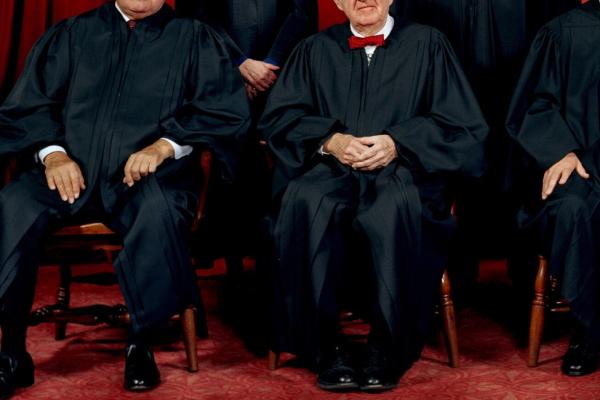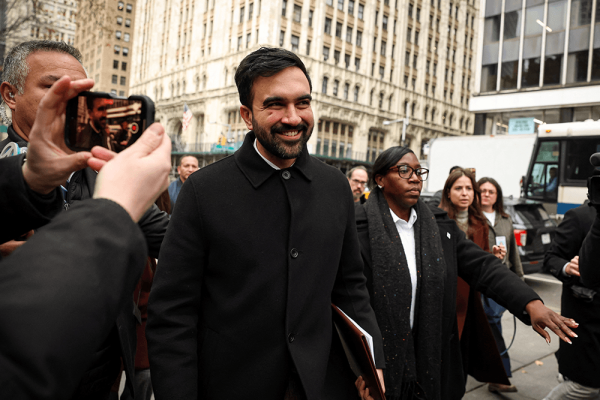AFTER JUSTICE ANTHONY KENNEDY announced his retirement from the Supreme Court, I was gripped with grief for my nieces, nephews, and their children and for the unborn. Why? Because as an African-American evangelical woman, I knew that a more firmly conservative Supreme Court would likely continue to roll back civil rights protections, making African Americans and other people of color more vulnerable, physically and economically.
At the same time, even though ending abortion has been proclaimed as a key goal by the conservative movement, their strategy to do so is poised to fail because it ignores the link between poverty and abortion in our country, both of which are also affected by access to equal rights and opportunity for all. And, truth be told, because ending abortion was never their real goal.
Conservatives have argued that to reduce or end abortion in the United States, the country must outlaw it. The strategy has been to tip the balance of the Supreme Court so that politically conservative judges are the majority. When in power, so the plan goes, conservative justices will overturn the 1973 landmark case Roe v. Wade and the U.S. will outlaw and therefore be rid of abortion. But that strategy was crafted by conservatives intent on exploiting differences of belief in U.S. society regarding “hot-button” issues—including abortion, guns, separation of church and state, LGBTQ+ rights, and censorship—to achieve political goals much broader than ethical concern about abortion.
As Randall Balmer explains in his seminal analysis of the Religious Right, Thy Kingdom Come, early 1980s evangelical leaders such as Pat Robertson and Jim Bakker, in partnership with political strategists including Paul Weyrich, aimed to leverage evangelical faith communities to build the conservative political movement, with the goal of pushing back against the gains of the civil rights era through a weakened federal government, few taxes (at least for the better off), and an expansive military. After a failed attempt to prohibit interracial marriage and protect segregation in the case of Bob Jones University v. United States, they shifted tactics. They turned their attention to abortion.
From ‘war on poverty’ to ‘war on drugs’
Something else shifted in the 1970s and ’80s. President Richard Nixon declared a so-called war on drugs in 1971 and transferred resources from President Johnson’s “war on poverty” to federal drug control agencies. In 2016, Dan Baum wrote in Harper’s about a 1994 interview he did with top Nixon aide John Ehrlichman in which Ehrlichman confessed that the policy was not really about containing drugs. It was aimed at undercutting Nixon’s key “enemies,” African-American people and anti-Vietnam War protesters.
“We knew we couldn’t make it illegal to be either against the war or black,” Ehrlichman told Baum. “But by getting the public to associate the hippies with marijuana and blacks with heroin, and then criminalizing both heavily, we could disrupt those communities.”
Nixon’s war on drugs devastated African-American communities. Money poured into programs that stripped, in disproportionate numbers, African-American families of their capacity to exercise agency by removing fathers through mandatory sentencing laws and no-knock warrants, while funds decreased for safety net programs. This was the start of modern-day mass incarceration. When these policies intensified under Reagan in the 1980s, poverty rates began to rise again. What does this have to do with abortion? In the first decade after Roe v. Wade—the first decade of official reporting on abortion rates—we didn’t know what the data clearly shows us now, that poverty is a primary driver of abortion rates.
The U.S. Conference of Catholic Bishops reported in 2014 that economic hardship is a prime driver of abortion rates: “In a 2005 study, 73 percent of women undergoing an abortion said not being able to afford a baby now was a reason for the abortion.” The study went on to explain: “That number rose to 81 percent for women below the federal poverty line. And while the abortion rate for American women declined by 8 percent between 2000 and 2008, among poor American women it increased by 18 percent.”
Likewise, in 2017 the American Journal of Public Health reported that women living below the federal poverty level “accounted for almost half of all abortion patients in 2014, and this group had the highest abortion rate of all groups we examined.”
To significantly reduce abortion rates, we must cut poverty.
The effects of a conservative court
Some who are morally opposed to abortion are eagerly awaiting the moment when Roe v. Wade can be overturned and, in their view, abortion will be no more. But overturning Roe won’t end abortion. In fact, it may increase it.
First, overturning Roe would not end abortion nationwide. It would send the decision back to individual state legislatures to decide. The states most likely to outlaw abortion often have the lowest populations and already have the lowest abortion rates. Conversely, the states least likely to outlaw abortion tend to have the highest population centers in the nation, including urban areas with the highest concentrations of poverty and, predictably, the highest abortion rates. In short, overturning Roe v. Wade would likely have a marginal impact on the U.S. abortion rate.
Worse, a conservative majority court will all but guarantee the removal of civil rights protections secured by the landmark 1954 Supreme Court ruling in Brown v. Board of Education. Rarely in the history of the court has a conservative majority ruled to explicitly protect the civil rights and freedoms of people of color. Rather, conservative majorities have consistently whittled away at civil rights protections based on the Brown decision and gained in the civil rights era.
For example, in 2013 a conservative majority voted to defang the Voting Rights Act by declaring unconstitutional the formula that determines which states must seek preclearance before changing voting laws and structure. Section 4 of the act was nullified. Since then 23 states have introduced voter-suppression measures.
In the wake of five years of hashtags, marches, controversy, and attempted reform stemming from police killings of unarmed African-American and Latinx men, women, and children, a conservative majority of the Supreme Court turned a blind eye to the recommendations of the Obama administration’s Task Force on 21st Century Policing. A conservative majority voted in 2018 to sanction the “Shoot First, Think Later” approach to policing, which empowers police to kill with virtual impunity.
Finally, in the 2007 case Parents Involved in Community Schools v. Seattle School District No. 1, a conservative majority ruled that de facto segregation of school districts is constitutional. With this ruling, conservative justices took direct aim at Brown v. Board of Education and weakened every legislative act that rests on that ruling.
The case can be made that decreased liberty leads to increased poverty. Flipping Roe v. Wade by stacking the courts with conservative judges will ultimately increase abortions by increasing poverty in the U.S. And along with that, African Americans and other minorities in the U.S. will have their civil rights, economic opportunities, and right to life and liberty further undercut. Protection of all human life would not seem to be the true goal of conservative political strategists who exploit sincere moral differences among U.S. citizens regarding abortion.
The abortion rate in the United States is at an all-time low. The balanced makeup of the court over the past decades has contributed to these reductions. If we want abortion rates to continue to fall, we must do everything in our power to protect and secure the rights of people of color and other minorities. And we must wage war on poverty ... again.

This appears in the November 2018 issue of Sojourners
Got something to say about what you're reading? We value your feedback!






